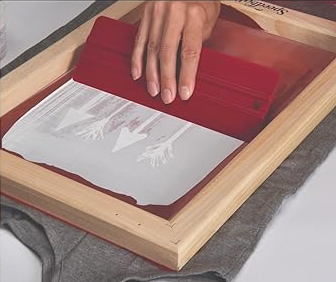
A Guide to Garment Printing Methods: Understanding DTG, Screen Printing, DTF, and Sublimation
Share
Introduction
Have you ever wondered how those cool designs end up on your favorite shirts? There's a whole process behind it! From using screens to newer methods like direct-to-garment printing, there's a lot to learn. Whether you love fashion, care about the environment, or just like to know how things work, you're in the right place. Let's explore the world of shirt printing together and find out how it all happens!
#TLDR
Direct-To-Garment (DTG): Printing method where ink is sprayed onto clothing, like a t-shirt, using a special printer, similar to how your home printer works.
Screen Printing: Technique where ink is pushed through a screen onto fabric, creating designs on shirts. It's good for making lots of shirts with the same design.
Direct-to-Film (DTF): Method where designs are printed onto film paper, then transferred onto fabric using heat. It's good for creating thin, vibrant designs.
Sublimation: Printing process where ink is transferred onto fabric using heat, covering the entire garment with the design. It's used for making all-over prints on shirts.

A printer for paper, similar to how DTG works.
Direct-To-Garment (DTG)
Direct-to-garment (DTG) is a method of digital ink application to a product, specifically textiles like a t-shirt. The ink is sprayed onto the garment similar to how your inkjet printer sprays ink onto paper. DTG printing is very popular with print-on-demand (POD) because it requires no upfront work.
There are a few steps to the DTG process. First, a pre-treatment solution is applied to the print area. This solution helps the ink stick to the fabric. Second, the garment is placed on a flat surface and put in the printer, where the ink for the design is applied by spraying. Lastly, the garment is dried so the ink cures.
DTG works best on cotton, but blends are also suitable.
Some DTG printers (including those used for some products in our shop!) use water-based vegan DTG inks that are non-hazardous, toxin-free, biodegradable, and contain no animal by-products.

Screen printing
Screen printing, on the other hand, is where ink is pushed through a woven screen (also called mesh stencil) onto fabric. The ink doesn’t soak into the fabric but lays on top of the product. This is more common for bulk printing because it requires screen stencils to be created for each design image. Also, since the ink is layered onto the fabric, it can feel much thicker on the garment.
Since screen printing is done in bulk, this could lead to overproduction if only some printed items are sold. So these unsold items could end up in a landfill or burned, contributing to pollution. In addition, screen printing normally uses ink that does not biodegrade and uses a lot of water.

Direct-to-Film (DTF)
Direct-to-film (DTF) is another method of applying designs to textiles. First, the design is printed onto some film paper. Then, the film is pressed onto the fabric using a heat press. The print is very thin and not bulky. However, it may feel plastic-like and stiff initially. DTF prints may be more vibrant than DTG since the fabric is not soaking up the ink.
The inks used in direct-to-film printing are water-based and non-toxic, so they’re environmentally friendly. The transfer film is also usually recyclable.

Sublimation
Sublimation ink printing is a method used when you want the ink all over a garment. This is called all-over-print. The ink is put onto a transfer paper and then pressed onto the fabric using a heat press. Only after the ink is applied is the garment cut and sewn!
Conclusion
There are different reasons each of the above methods may be best for a business use case. In the Stepping Green shop, we currently only utilize DTG. DTG is an environmentally friendly method that works with our on-demand-only printing requests. Check out our shop to get your unique design printed in an eco-friendly manner!

